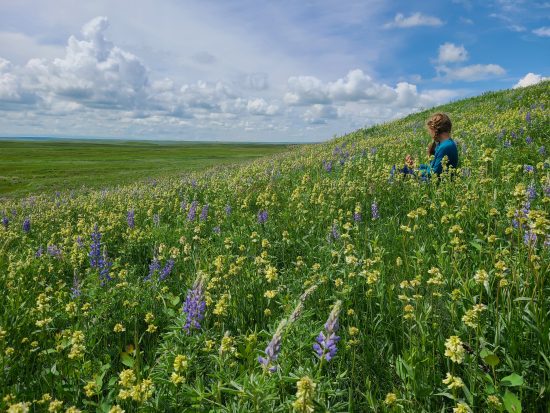
Conserving Alberta’s private lands…but just for a while?
February 4, 2025
- •
- •
- •
by Lindsey Wallis
The Alberta government has been doing a lot of “engagement” with Albertans recently. Parks, water, the South Saskatchewan Regional Plan. At the beginning of December, the Alberta government quietly did some engagement with “targeted stakeholders” around private land conservation. On the surface, this seems like a good thing (or at least a boring administrative exercise), evaluating the current tools and making them better. Good, right?
But what if you also knew that in February 2023 the Rural Municipalities of Alberta passed a resolution requesting:
“The Government of Alberta revise the Alberta Land Stewardship Act to require that an expiration date, not exceeding 40 years, be included in conservation easement agreements.”
With that knowledge, the government’s engagement could be viewed as an excuse to make changes to the Land Stewardship Act that put long term conservation at risk. Especially when the engagement page states, “as we develop new options and refine existing tools for private land conservation.”
What are conservation easements and why are they important?
Alberta has a lot of private land, especially in the prairie and parkland regions. Less than two per cent of Alberta’s total grasslands are protected by Provincial protected areas. Alberta Parks’ own resources acknowledge we have lost nearly 60 per cent of our native prairie and, of the remaining, almost half is located on private land. Just one reason that we desperately need to look towards individual landowners to protect some of the “best blocks of contiguous temperate grasslands in North America” through tools such as easements.
A conservation easement is a legal agreement registered on the title of the land, which is typically negotiated in perpetuity. It restricts certain land uses, as well as development. The idea is to recognize and preserve the conservation value of the land for future generations, keeping wild ecosystems and their functions intact and often preserving large tracts of habitat. Conservation easements protect biodiversity, watershed health, and contribute to climate resilience. The landowner still owns the land and continues to work it, within the restrictions of the easement. There is also a financial incentive provided by the federal or provincial government, in the form of cash or charitable tax credits.
As of December 2022, 479,286 acres of land in Alberta were protected by conservation easements, including almost 191,000 acres in the grasslands. And the number of landowners considering or adding easements is growing, as successional planning, sustainability and conservation are increasing in importance for Alberta agricultural producers.
What’s happening now?
Guy Greenaway, executive director at the Corvus Centre for Conservation Policy, took part in the consultations and says they were poorly done, despite the public service genuinely wanting to address issues. He says the facilitators often used fuzzy terminology, often blending temporary and permanent easements. It seems they are looking to replace a robust tool, the Alberta Land Trust Grant Program, with a collection of inferior ones.
In his view, the biggest challenge for the process was doing consultation without any sense of budget. “There is nothing wrong with the (Alberta Land Trust Grant Program), it is the funding going into the program isn’t sustainable,” he says. “We are being asked to choose between protection and stewardship. They are looking at adding more tools, but we know they are going to rob from Peter to pay Paul. Paying someone for certain practices is not the same as protection in perpetuity.”
Greenaway thinks the government will be hesitant to open the Stewardship Act. But he says that doesn’t mean they won’t find ways around it, by putting up various hurdles to permanent easement creation or preferentially funding stewardship initiatives and temporary easements over permanent ones.
Restricting the creation of permanent easements would be disastrous for conservation in Alberta and would be most keenly felt in the grasslands. With no promise of “in perpetuity,” the benefits to putting an easement on their lands would be drastically reduced, including the financial incentive landowners receive. Something that would have so many consequences for Albertans, our land, water and wildlife should have a fulsome public review.
Lorne Fitch has worked with private landowners through the Cows and Fish program for decades to help them become better stewards of their working lands. He says, “I guess if you think sequestering carbon, trapping moisture, building soil, having dependable grazing in drought, and also contributing to wildlife conservation is only good in the short term, then tinkering with the longevity of conservation easements is an idea with merit. But we need to live and negotiate conservation in the long term.”
So what’s next?
The Government of Alberta website says it will continue work through March 2025. AWA will continue to follow this issue and let you know if there is room for public comment. In the meantime, email or call your MLA and the Minister of Environment and Protected Areas (contact information on our website) to let them know that you value permanent conservation easements, and they are vital to help Alberta reach its 30 by 30 goal, as well as being key tools to increase biodiversity and mitigate climate change. We need to stress that, for them to be effective, the program needs increased and sustainable funding.
The good news is government can’t open the Land Stewardship Act without bringing it to the Legislature, which means major changes can’t be done in secret. Also, as far as Fitch is concerned, meddling with how people are allowed to manage their private land could alienate many of the current government’s base – rural landowners. “Many of the people who have negotiated for easements may be Conservative, and this would go against the grain of why they had an easement put on in the first place. Regardless of stripe, these are stewards (of the land) and they know the importance of longevity to these agreements.”
Perhaps we will be pleasantly surprised by the outcome of these engagement sessions. Greenaway thinks conservation and stewardship can work in tandem, if both are properly funded. Currently the Alberta Land Trust Grant Program is only funded by the sale of public land, something AWA has opposed, and is unsustainable. If the government can find a sustainable funding stream to adequately fund both permanent conservation and stewardship activities, Alberta could develop a robust network of privately stewarded and protected lands, which would be a win for conservation in our province.
If you would like to learn more about conservation easements and why they are an important tool for conservation in Alberta, the Miistakis Institute has developed a wonderful resource: Private Land Conservation in Alberta. The Corvus Centre also has several papers related to Private Land Conservation.
